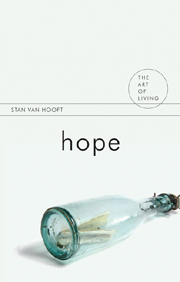5 - Hope and religion
Summary
I have argued that hopefulness is a fundamental existential structure of human existence and that specific and episodic hopes are expressions of this primordial hopefulness. Perhaps the most obvious evidence for this claim is the phenomenon of religion. Statistics gathered in 2005 indicate that there are 2.1 billion Christians in the world (33 per cent of the world's population), 1.5 billion Muslims (21 per cent), 900 million Hindus (14 per cent), 394 million adherents of Chinese traditional religions (6 per cent), 376 million Buddhists (6 per cent), and many other religious adherents besides. Those who describe themselves as non-religious constitute just 16 per cent of the world population and almost half of these still describe themselves as “theistic”. I regard these statistics as evidence for our primordial hopefulness because I consider religion to be an expression of that hopefulness. In this chapter I hope to justify this conviction and spell out its implications.
Spiritual anxieties
Like hope in other domains, religious hope is motivated by various needs, anxieties and concerns rather than mere fantasies or desires. Our lives are fragile, vulnerable, fallible and mortal. These and many other features of the human condition generate deep anxieties and concerns at the core of our being. As I noted in Chapter 3, it is our mortality that is the most pervasive source of dread and anxiety in our lives. We shall explore presently how religion has helped us face that dread, but outside a religious context we can only think that death will bring us oblivion.
- Type
- Chapter
- Information
- Hope , pp. 102 - 135Publisher: Acumen PublishingPrint publication year: 2011



